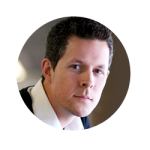
Last time we talked about boosting retirement savings during your final working years. In an ideal world you’ll have the double-effect of being in your peak earning years while your largest financial obligations are in the rear-view mirror.
In the real world, however, many Canadians are faced with an uncertain retirement because they lack adequate savings, don’t have a company pension plan, they’re still carrying a mortgage, line of credit, or even (gasp!) credit card debt, or they’re still providing financial support to their adult children.
Preparing for Retirement
Much like preparing for a new addition to the family, or for one spouse to stay home with the children full-time, preparing for retirement is about understanding new spending patterns.
If your final working years aren’t spent in savings overdrive mode, perhaps there’s time to test out your retirement budget in the year or two before you retire. You might as well try living on 40 – 60% of your income while you’re still working to see if it’s realistic.
If it’s not, there’s still time to adjust course by altering your income expectations, working longer (and saving more), or revisiting your investment strategy. Speaking of which …
Investing in Retirement
One of the biggest worries for retirees is outliving their money. That’s why it’s crucial to have a proper investment strategy in retirement. Investors don’t simply sell their stocks and move to bonds, GICs and cash once they retire. Canadians are living longer and our portfolios need to be built to last.
One strategy to consider is the bucket approach. The idea is that while retirees need cash flow, they also need a diversified portfolio of stocks and fixed income. Your first bucket is for immediate needs and should contain one or two years’ worth of living expenses in easy-to-access cash. Bucket two is for medium-term needs and is filled with bonds or GICs. Bucket three is meant for long-term needs and so it’s typically filled with stocks, ETFs, or index funds.
Also read: A better way to generate retirement income
Understanding CPP and OAS benefits
Whether you think you’ll rely on government benefits or not, it’s important to understand how CPP and OAS benefits work and how they might impact your retirement income plan.
The maximum monthly payment amount for CPP in 2020 is $1,175.83 [if taken at 65], but the average monthly amount for new beneficiaries is actually $696.56. You can take CPP as early as 60, but the amount is reduced by 0.6% for every month you receive it before 65.
Alternatively you can delay taking CPP until as late as age 70. In this case your pension amount will increase by 0.7% for each month you delay receiving it up to age 70.
OAS pays a monthly maximum of $613.53 [again, if taken at 65.] Unlike CPP, which is tied to your employment history, you can receive OAS even if you have never worked or are still working.
While you can’t take your OAS pension early, you can delay receiving it for up to 60 months in exchange for a higher monthly amount: up to a maximum of 36% at age 70.
Related: Why You Should (Or Shouldn’t) Defer OAS To Age 70
As you can see, there are advantages to delaying your government benefits. Namely, if you expect to live a long and healthy life, and have sufficient income to meet your needs through to age 70, it makes sense to delay taking CPP and OAS.
New Retirement Reality Check
It used to be rare to retire with a mortgage, and unheard of to have your adult children still living at home. But today, with four in 10 Canadians aged 55-64 still carrying debt, and 15% still supporting their adult children, there’s a new retirement reality setting in.
It brings a level of uncertainty to retirement as lifestyles get adjusted on the fly and new spending patterns emerge. It means working diligently, on your own or with a financial planner, to ensure retirement expenses don’t exceed your income target.
The goal is to feel comfortable with your finances during retirement, and you can do so by either by working with a financial planner or having a good enough knowledge of personal finance to go it alone.
Final Thoughts
More than ever, preparing for retirement today involves careful financial planning and an open mind. You need to understand how to keep investing effectively while in retirement, determine when to take CPP and OAS, and understand how those government benefits fit in to your retirement income plan.
As your mortgage is nearing its end, you need to decide how comfortable you are carrying debt into retirement. Then, to add another wrinkle to your retirement plans, there is your adult children (or grandchildren) to consider, and how much (if any) financial support you wish to provide for them.
 In addition to running the Boomer & Echo website, Robb Engen is a fee-only financial planner. This article originally ran on his site on Aug. 19, 2020 and is republished here with his permission.
In addition to running the Boomer & Echo website, Robb Engen is a fee-only financial planner. This article originally ran on his site on Aug. 19, 2020 and is republished here with his permission.

